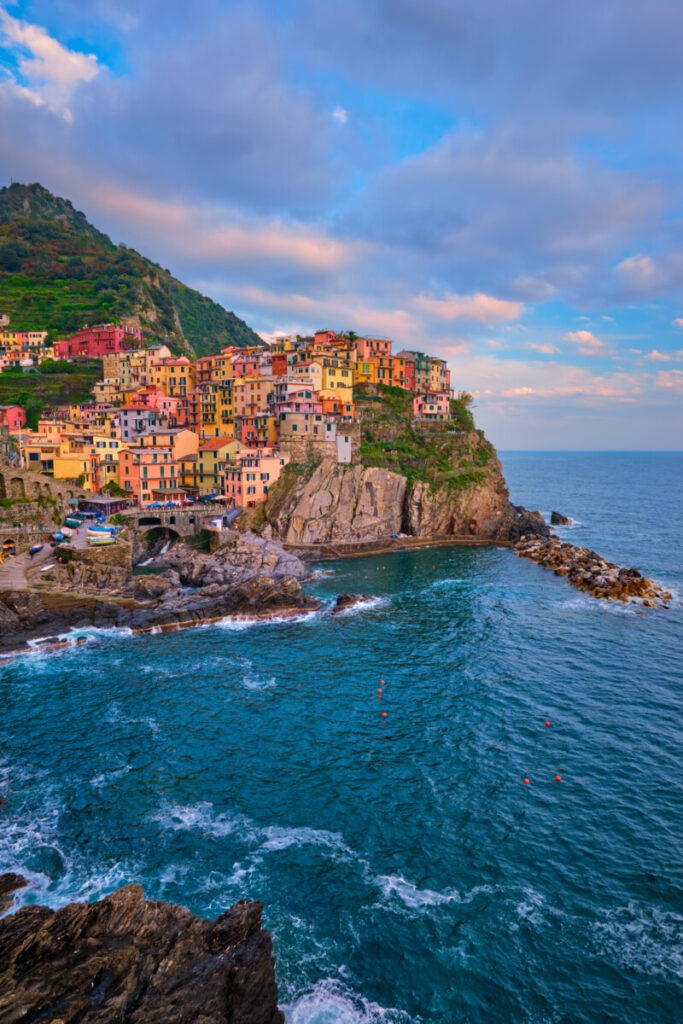As you prepare for your Italian road trip, you’ll want to know the necessary rules and requirements to ensure a smooth journey. You’ll need a valid driving license, car insurance, and a UK sticker, as well as mandatory safety items like a warning triangle and high-visibility jacket. With the right preparation, you’ll be able to enjoy the beautiful Italian landscape and stress-free driving experience, whether you rent a car or bring your own, and take advantage of car rental options to make your trip even more enjoyable.

Types of Driving Requirements in Italy
A list of driving requirements is necessary for your trip to Italy. You will need:
- Valid driving license
- Car insurance
- V5 certificate
Recognizing these requirements is key to a smooth trip.
| Document | Description |
|---|---|
| Driving License | Valid UK photocard driving licence |
| Car Insurance | Valid car insurance certificate |
| V5 Certificate | Valid V5 certificate |
| Proof of ID | Valid Proof of ID or National ID for EU citizens |
| UK Sticker | A UK sticker |
Necessary Documents and Car Equipment
Clearly, having the right documents and equipment is vital. You will need a warning triangle, high-visibility jacket, and headlight beam deflectors in your car.
Hiring a Car in Italy: Age and License Requirements
Now, if you plan to rent a car in Italy, you should know that the minimum age for hiring a car is 18, and you must have a full UK driving licence.

Italy has specific requirements for car rental, including a minimum age of 18 and a full UK driving licence. You will also need to have held your licence for at least a year or two, and some agencies may require a Collision Damage Waiver (CDW). When hiring a car, make sure to inspect the vehicle and note any damage before you drive off, and take photos of the car when you return it. You should also be aware of the speed limits in Italy, which range from 50km/h to 130km/h, depending on the road. Additionally, be aware of limited traffic zones (ZTL) and pedestrian zones, where access is restricted. By following these rules and regulations, you can have a smooth and safe driving experience in Italy.
Tips for a Smooth Italian Road Trip
Some key considerations for your trip include:
- Car rental
- Driving rules
Perceiving these tips will help you have a smooth trip.

Preparing Your Car and Documents
Accordingly, you will need to ensure your car is equipped with necessary documents and safety items, such as a valid driving license, car insurance, and a warning triangle.
Choosing the Right Hire Car and Insurance
Assuming you decide to rent a car, you will need to consider the type of vehicle and insurance that suits your needs, including a Collision Damage Waiver to cover any potential damages.
Smooth navigation through Italian roads requires careful planning, especially when it comes to car rental and insurance. You should opt for a hire car that meets your requirements and budget, and ensure you have the necessary insurance coverage to protect yourself against any unforeseen circumstances. Additionally, it’s important to read reviews and compare prices to find the best car rental option for your trip. By doing so, you can enjoy a stress-free and enjoyable road trip in Italy, exploring its beautiful landscapes and vibrant cities without any worries about your rental car or insurance.

Step-by-Step Guide to Driving in Italy
There’s a lot to know when driving in Italy. Here’s a breakdown of what you need to know:
| Documents | Items to Bring |
|---|---|
| Valid driving license | Warning triangle |
| Car insurance certificate | High-visibility jacket |
Understanding Speed Limits and Traffic Zones
Anyway, you should know that speed limits in Italy vary, with a maximum limit of 130km/h on motorways and 50km/h in residential areas. You should also be aware of ZTL zones, which have restricted access to non-residents at certain hours of the day.
Navigating Motorways, Toll Roads, and Roundabouts
Anyway, when driving on Italian motorways, you’ll need to pay a toll fee on certain parts of the road. You should also know how to navigate roundabouts, where you must give way to drivers on your left and to any cars already on the roundabout.
Understanding how to navigate motorways, toll roads, and roundabouts is imperative for a smooth drive in Italy. You’ll need to be aware of the toll fees and how to pay them, as well as how to navigate roundabouts safely. Additionally, you should know that car rental companies often include toll passes and insurance in their packages, making it easier for you to rent a car and drive in Italy without worrying about the details.
Factors to Consider When Driving in Italy
To ensure a smooth Italian road trip, you need to consider several key factors, including traffic rules, road conditions, and car rental options. Consider the following:
- Speed limits
- Traffic zones
Thou should be aware of these factors to avoid any issues during your trip.
Child Seat Regulations and Alcohol Allowance
Even if you’re familiar with child seat regulations in the UK, you should know that Italy has its own set of rules. Infants up to 9lbs must be in a rear-facing child seat, while children over 48.5lbs can use a booster seat. The alcohol allowance is 0.05% for private car drivers.

Penalties and Fines for Traffic Offenses
For your own safety, you should be aware of the penalties and fines for traffic offenses in Italy. Fines can range from €41 to €6,000, and police can collect a quarter of the amount due on the spot.
Consider the consequences of drunk driving or speeding in Italy, which can result in severe penalties and fines. You should always follow traffic rules and regulations to ensure a safe and enjoyable road trip. When renting a car, make sure to choose a reputable car rental company that provides adequate insurance coverage and roadside assistance. By being aware of these factors, you can have a smooth and stress-free Italian road trip.
Pros and Cons of Renting a Car in Italy
Not having to worry about maintenance and insurance can be a relief.
| Pros | Cons |
|---|---|
| Convenience | Additional fees |
| Cost savings | Restrictions |
Benefits of Hiring a Car, Including Convenience and Cost Savings
Less paperwork is involved when you rent a car, as the rental company handles the necessary documents. You can enjoy a stress-free trip with a rental car, which often comes with mandatory items such as a warning triangle and reflective jacket.
Drawbacks of Renting a Car, Including Additional Fees and Restrictions
Closely related to renting a car are the extra costs you might incur, such as fuel fees and tolls. When renting a car, you should be aware of the rental conditions, including the minimum age requirement and insurance coverage.
Another thing to consider is that rental cars often come with limitations, such as mileage limits and border crossing restrictions. You should always check the rental agreement carefully to avoid any unexpected charges. When renting a car in Italy, you should also be aware of the local traffic rules, including speed limits and ZTL zones. By being informed, you can have a smooth and enjoyable driving experience in Italy with your rental car, and make the most of your car rental experience, whether you decide to rent a car in Italy or use other transportation methods.
Essential Information for Drivers in Italy
For a smooth Italian road trip, you need to know the crucial information. Italy has specific rules and requirements for driving, including necessary documents and car equipment.
Payment Methods and Parking Options
You will find that payment methods in Italy vary, with cash being the most common, especially in rural areas. Credit or debit cards are also widely accepted, and you can use them to pay for parking, fuel, and other services.

Fuel Types and Petrol Station Information
At petrol stations, you can find unleaded petrol (benzina or Super senza pb) and diesel (Diesel or gasolio). You can pay using cash or card, and some stations offer self-service or full-service options. Here is the information about fuel types and petrol station options:
| Fuel Type | Description |
|---|---|
| Unleaded Petrol | Benzina or Super senza pb |
| Diesel | Diesel or gasolio |
| LPG | Available at some stations |
| Payment Methods | Cash, credit card, or debit card |
| Service Options | Self-service or full-service |
Thou should always check the prices and services offered at each petrol station to ensure a smooth experience.
A traveller looking to rent a car in Italy should consider the following options:
- Car Rental Companies: Many international companies have branches in Italy, offering a range of vehicles.
- Car Sharing Services: Some companies offer car sharing services, which can be a cost-effective option.
- Local Rentals: Renting a car from a local company can provide a more personalized experience.
Thou should research and compare prices, services, and reviews to find the best option for your needs. Importantly, car rental companies usually require a valid driving license, credit card, and proof of identity.

To wrap up
Considering all points, you now have a clear understanding of the necessary tips and rules for a smooth Italian road trip. You can rent a car in Italy, which will be equipped with necessary items, and drive safely by following the rules on the road. Remember to carry required documents and equipment, and be aware of speed limits, ZTL zones, and motorway tolls. By following these guidelines, you will be well-prepared for your Italian adventure and enjoy a stress-free journey with your car rental.
FAQ
What documents do I need to drive in Italy?
To drive in Italy, you need a valid UK photocard driving licence, valid Proof of ID or National ID for EU citizens, V5 certificate, car insurance certificate, and a UK sticker. You also need to have safety items such as a warning triangle, high-visibility jacket, and headlight beam deflectors in your car.
What are the rules for hiring a car in Italy?
The minimum age for hiring a car in Italy is 18, and you need a full UK driving licence. Some agencies may require you to have held your licence for at least a year or two. You will also need to show Proof of ID and have a credit or debit card for a deposit. Having a Collision Damage Waiver (CDW) is a requirement to drive any car in Italy.
Is it a good idea to rent a car in Italy and what are the benefits of renting a car through a car rental company?
Yes, hiring a car in Italy can save you trouble. The car will be equipped with mandatory items such as a warning triangle and reflective jacket. All damages will be covered by the car hire company if you opt for the complete insurance, and you will save money by not driving from the UK to Italy. Renting a car through a car rental company allows you to access a wide range of vehicles and benefit from their services, making your trip more convenient and enjoyable. You can rent a car from a car rental company and have a smooth Italian road trip.




It’s great to see such an informative guide for anyone planning a road trip through Italy. I agree that knowing the driving requirements is crucial—not only for compliance but also for peace of mind so you can focus on enjoying the journey!
It’s nice to hear you found the guide helpful. When you’re on the road in a beautiful place like Italy, it really does make a difference to know the ins and outs of driving there. The last thing you want is to be fretting over fines or regulations when you could be admiring the scenery or stopping at a quaint little café.
This is really useful information as I’m planning a road trip to Italy next summer! I hadn’t thought about some of the requirements like the V5 certificate—definitely need to double-check that before we head off.
I really appreciate the detailed breakdown of the driving requirements for Italy; it’s so easy to overlook these things when planning a trip. It brings back memories of my own road trip through the Italian countryside a couple of years ago. I remember driving through Tuscany, with those stunning rolling hills, and stopping at little vineyards along the way. It really was one of the highlights of my travels.
This post really captures the essentials for a fantastic road trip in Italy! As someone who has driven through the Italian countryside, I can’t stress enough how the proper preparation makes all the difference. Those winding roads in Tuscany and the breathtaking views from places like the Stelvio Pass are simply unforgettable.
As I read your post, it transported me back to the last road trip I took through Italy, where every bend in the road revealed a new breathtaking landscape and a bustling village that seemed frozen in time. The importance of being well-prepared for such an adventure cannot be understated, and the driving rules you highlighted serve as essential pillars to a memorable journey.
Preparing for a road trip in Italy is indeed an exciting venture! It’s interesting to note that beyond the practical requirements like a driving license and car insurance, being familiar with local driving customs can also enhance the experience. For instance, understanding that Italian drivers can be quite spirited, especially in cities, might encourage visitors to adopt a more defensive driving style.
What a fantastic overview of the essentials for driving in Italy! As someone who’s experienced the thrill of cruising along the winding roads of Tuscany, I can attest to how important it is to be well-prepared. The stunning landscapes, from olive groves to vineyards, truly make the drive a memorable part of the journey.
Your insights into the necessary driving requirements for an Italian road trip are incredibly helpful and timely. Having done a few road trips through Italy myself, I can attest to how crucial it is to prepare ahead of time, not only for compliance but also for a more enjoyable experience on the road.